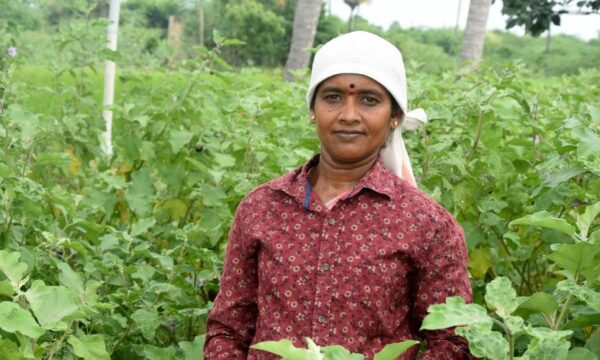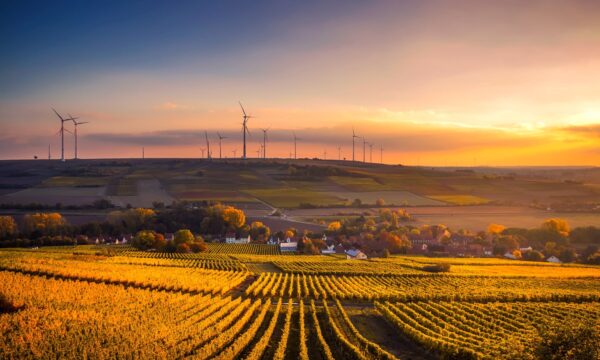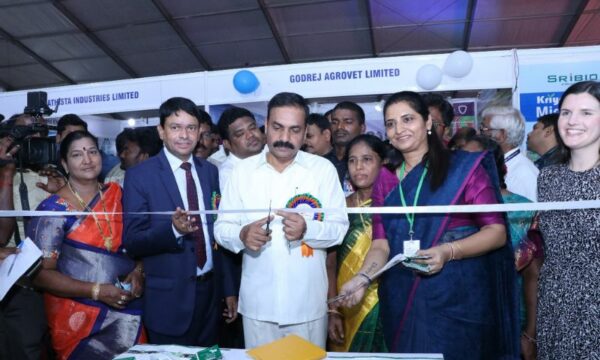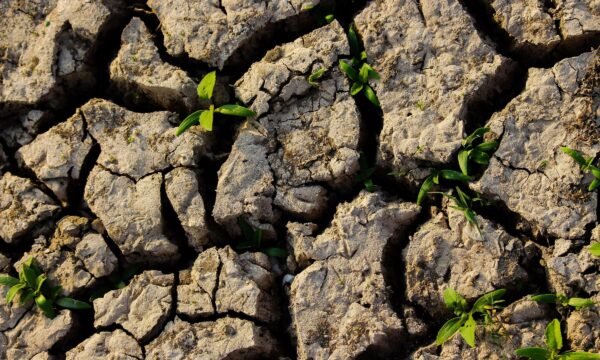Agriculture is very important to India, employing 55% of its population and providing 16.5% of its annual GDP. The industry as a whole is worth US$ 17.5 million alone in exports. However, it’s not all plain sailing, with low productivity and regional groundwater depletion currently threatening Indian agriculture. Climate change and the demands of an ever-increasing population are also emerging as challenges that the country will soon have to adapt to.

Indian farmers threshing rice. By CIAT Flickr
Rice is one of the most grown crops within Indian agriculture. However, it has low productivity levels, with scientific literature suggesting that it’s as low as 2.9 tons of rice produced for every hectare of land used (ton/ha). China, on the other hand, has a higher productivity of 6.2 ton/ha. This higher productivity means that China is able to produce more rice per year than India, using less land (between 2000-2004).
Why is there such a big gap? Overall it suggests less efficient agricultural techniques in India as a whole, but it must be remembered that 2.9 ton/ha is an average for the entire country. The North and West of India have highly efficient agricultural techniques, whilst East India’s are comparatively poor. This difference has been caused by agricultural politics.
Past agricultural policies have been focused on North and West of India. They’ve included generous subsidies for farming inputs, cheaper electricity for farmers and a guaranteed high market price for crops. These policies have resulted in lower farming costs and a guaranteed source of income that has enabled them to reinvest their profits back into their farming practices. East India does not benefit from such policies and is unable to reinvest in improving their farming practices.
These policies are also exacerbating groundwater depletion within India. In the last 50 years there’s been a large increase in the number of informal and unregulated water pumps that have appeared in India. These provide free water that is outside of government control. Unfortunately, they’re also highly inefficient in groundwater extraction. They also mean that farmers don’t need to improve their irrigation practices to conserve water and are restricted only by the electricity that’s needed to extract groundwater (commonly subsidised in rural areas). This groundwater depletion is causing a lowering of the water table and is affecting human health (there has been a reported increase in drinking water contaminants in areas facing groundwater depletion). The future of agriculture in these regions would also be under threat if the water table continues to decrease, making groundwater extraction for irrigation harder.
However, there have recently been government attempts to reverse groundwater depletion. A ‘recharge’ groundwater initiative has been introduced into rural areas. These successful community-based efforts look to capture rainwater from rooftops in order to supplement groundwater stores. (More information on Indian groundwater recharge schemes can be found in The Agricultural Groundwater Revolution, CAB International (2007))

Melting of Himalayan glaciers will create new food security problems for India. By ggewn, Flickr
Looking to the future, India will also have to deal with climate change and its ever-increasing population. Climate change will affect Himalayan glacier snow-melt and monsoonal rainfall. These are the two main sources of India’s water and any changes to their frequency, intensity or timing will affect India’s current food security.
The initial climate change-induced melting of the Himalayan glaciers will result in increased surface run-off for farmers, benefiting their crop’s growth. However, in the long term, the glacier volume will decrease and result in less surface run-off, potentially creating drought conditions for farmers.
India also faces the challenge of feeding an ever-increasing population that’s predicted to reach at least 1.5 billion by 2050. India’s population is also predicted to become richer and undergo cultural changes such as consuming more meat in their diets. This lifestyle change will mean that more land will be needed to farm animals and it has been predicted that the amount of animal feed will need to increase from its current 8 million metric tonnes per year to 117 million metric tonnes by 2050.
Whether India decides to limit future population growth in a manner similar to China is yet to be seen. The country could alternatively follow the lead of other countries in purchasing and subsequently farming land overseas and transporting the food products to India. The only thing that is clear is that India has a lot to ponder in just maintaining, let alone improving, its current food security.
This blog article is an adaptation of an essay entitled “An evaluation of the sustainability of the current and future water resources of India” by Steven Forrest (2011). This essay is supported by approximately 40 references.
Related News & Blogs
Agricultural digitalization: Opportunities and challenges discussed at workshop in India
Authors: Dr R. Rajkumar, Principal scientist, (MSSRF) and Akanksha Nagpal, Manju Thakur (CABI) Digital tools have the potential to improve agricultural productivity, sustainability, and adaptability. Alongside longtime partners, M S Swaminathan Researc…
5 April 2024




